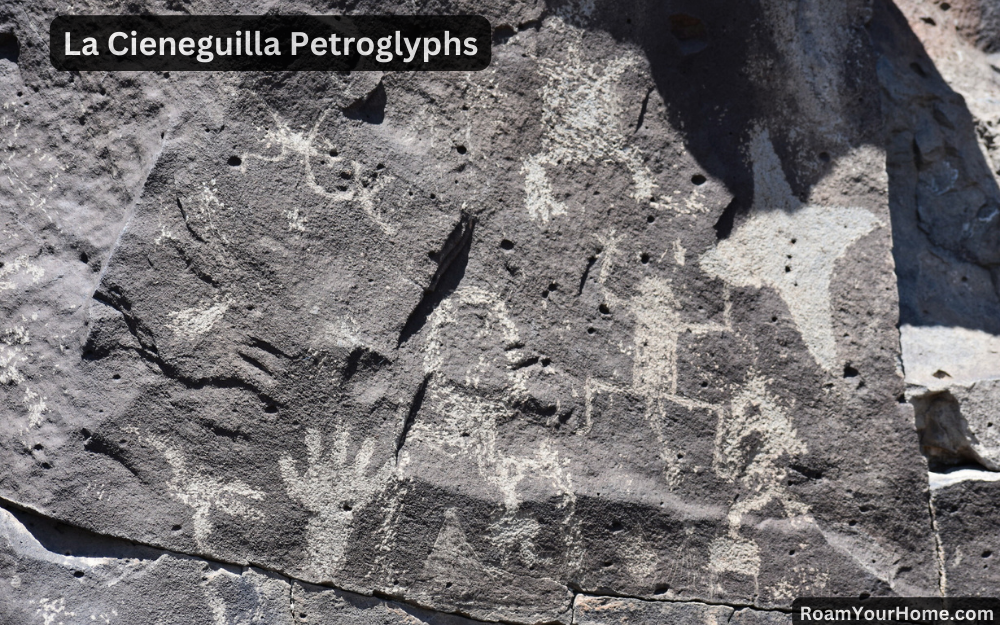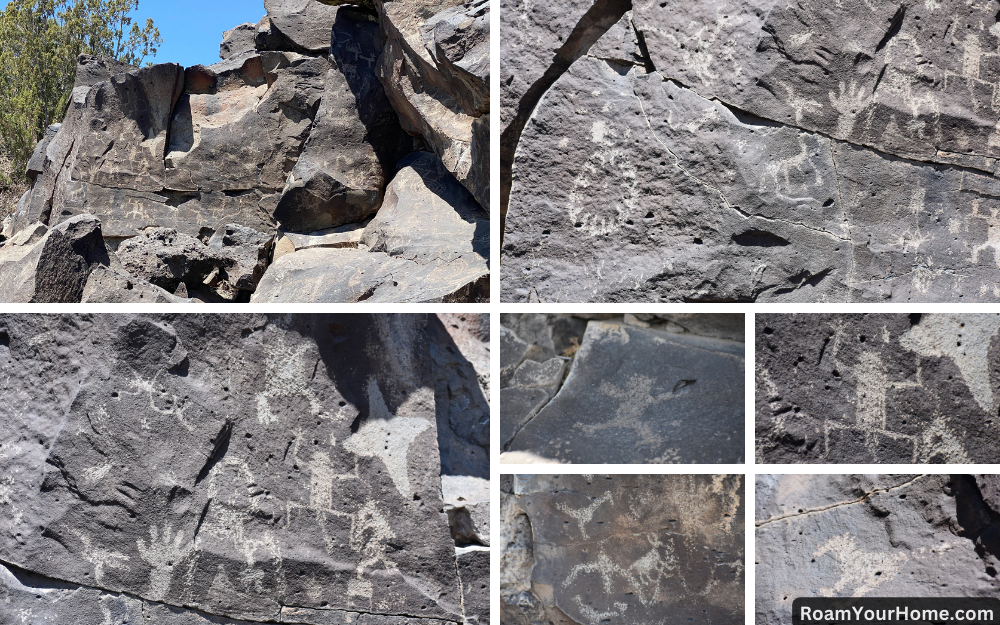
La Cieneguilla Petroglyphs: An incredible display of Native America Rock Art
Hundreds of petroglyphs have survived for hundreds of years on a mesa above the Santa Fe River in New Mexico. Many of them date from pre-contact times and the Spanish colonial era. The La Cieneguilla Petroglyphs are located near Santa Fe and a short drive from Albuquerque. The Bureau of Land Management runs the site.
Most of the petroglyphs were etched by Keresan-speaking Puebloan people who lived in the area between the 13th and 17th centuries.
The La Cieneguilla Petroglyphs is famous for the abundant number of hump-backed flute player images and a great variety of bird figures. Kokopelli is a fertility deity in many Southwest cultures. He is usually depicted as a humpbacked flute player. Kokopelli is one of the most easily recognized figures in the petroglyphs and pictographs in the Southwest. If you’ve spent significant time there, you almost certainly have seen him plastered on vehicles, Nalgenes, and just about anywhere else you can put a sticker. We have one on our cooler!

Hiking to the La Cieneguilla Petroglyphs
There is dirt parking at the trailhead. The BLM has a big warning about not leaving valuables in the car. The hike to the petroglyphs is steep and not super well-marked, but you can see the way. Be careful; there are ample signs warning about rattlesnakes. We did not see any, but they are clearly around. The best time to visit is in the early morning or around sunset. The golden hour sun illuminates the petroglyphs nicely, making for great photos.
The La Cieneguilla Petroglyphs are open year-round. However, there are no facilities there, such as restrooms or water.
The site is also interesting to those tracing the El Camino Real de Tierra Adentro route. Also known as the “Silver Road,” the Spanish used the ancient path between Mexico City and San Juan Pueblo, New Mexico.

